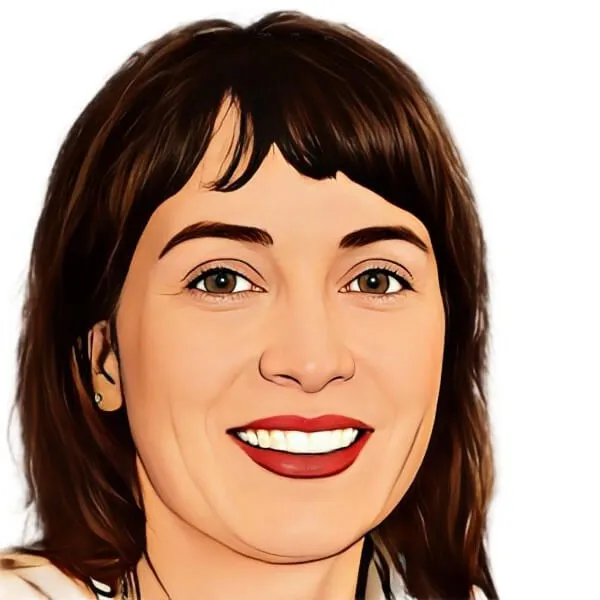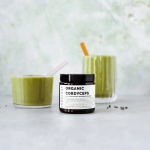
How to Partner with Restaurant Influencers for Maximum Impact
September 21, 2024
In today’s digital age, restaurant influencers have become powerful players in the food industry. Their ability to showcase culinary experiences and reach vast audiences on platforms like TikTok has a significant impact on dining trends and consumer choices. Restaurants are increasingly recognizing the potential of partnering with these social media personalities to boost their visibility and attract new customers.
This article explores the process of collaborating with restaurant influencers to achieve maximum impact. It covers how to understand and find the right influencers, create effective partnership strategies, and measure the results of these collaborations. By following these guidelines, restaurants can tap into the influence of food-focused content creators and expand their reach in the competitive dining market.

Content
Understanding Restaurant Influencers
Types of Restaurant Influencers
Restaurant influencers come in various forms, each with their unique strengths and audience appeal. Food bloggers are a prominent category, dedicating their social media content to trying new restaurants and sharing food-related experiences. They offer meticulously crafted written content, tantalizing recipes, and captivating food photography, inviting their audience into a world of gastronomic delights.
Travel influencers bring a global perspective, offering glimpses into the intersection of food and culture worldwide. Their immersive storytelling and breathtaking imagery transport audiences to far-flung destinations, exploring diverse cuisines and culinary traditions. This type of influencer can help make a restaurant a tourist destination and even drive more local interest.
Local influencers hold a special place in their communities, championing regional cuisines and uncovering hidden culinary gems. Through authentic storytelling and genuine enthusiasm, they foster a sense of connection and pride among their followers, encouraging support for local businesses and savoring unique local flavors.
Benefits of Influencer Partnerships
Collaborating with restaurant influencers yields numerous benefits for establishments. One significant advantage has an impact on expanding reach and exposure to a highly targeted audience. By partnering with influencers who have a dedicated following and resonate with their target demographic, restaurants can amplify their message and easily penetrate new markets.
Influencer marketing also has an impact on building trust with potential customers. As consumers become increasingly skeptical of traditional advertising methods, they place more trust in recommendations from people they follow. Influencers promote products and services through authentic content, helping to build trust with their followers. Their personal experiences and recommendations carry weight and influence their audience’s purchasing decisions.
Another key benefit has an impact on driving meaningful engagement and sales. Through storytelling, imagery, and immersive experiences, influencers captivate their audience’s attention and inspire action. This can influence purchasing decisions and drive revenue, resulting in tangible returns on investment and sustained growth for restaurants.
Key Metrics to Consider
To measure the success of influencer partnerships, restaurants should focus on several key metrics. Engagement rate is crucial, showing how well an influencer resonates with their audience. It offers a qualitative assessment of the impact and efficacy of their content in driving brand interactions.
Reach and impressions are simple yet effective ways to measure brand awareness. A growing audience signals that people are regularly interested in what the influencer shares, amplifying the restaurant’s reach and awareness.
Brand mentions are another important metric, indicating how often the restaurant has been discussed on social media, regardless of direct tags. A rise in mentions after or during an influencer campaign can expand the brand’s reach, indicating genuine engagement among the audience.
Website traffic from social media is paramount for illustrating the tangible impact of influencer marketing on overall business success. This metric links social media activities and website visits, showcasing the effectiveness of influencer campaigns in influencing potential customers to consider the restaurant by visiting its website.
Lastly, conversions are a crucial metric to track. These can include sign-ups for newsletters, promo code usage, or direct reservations. By calculating the revenue generated from influencer campaigns, restaurants can accurately measure the return on investment and its impact on overall social media ROI.
Finding the Right Influencers
Researching Local Food Bloggers
To find the right restaurant influencers, it’s crucial to start by researching local food bloggers. These individuals often have a strong connection with their community and can significantly impact local dining trends. According to The State of Food Blogging Survey, almost half of all food bloggers write restaurant reviews, making them valuable partners for promoting eateries.
When reaching out to food bloggers, it’s essential to take a personal approach rather than sending generic press releases. Many bloggers are active on social media platforms, particularly Instagram, where it’s easy to connect with them. Creating a relationship by liking and commenting on their social media posts can be an effective way to establish initial contact.
Before inviting a blogger to your restaurant, do your homework. Most bloggers focus on specific aspects of food rather than writing about it in a general way. Understanding their niche and audience helps ensure a mutually beneficial partnership. If you’re a new establishment, that might be enough to pique a blogger’s interest. However, to stand out, consider highlighting your unique selling point or showcasing your restaurant in an interesting light.
Utilizing Influencer Platforms
To streamline the process of finding and engaging with restaurant influencers, many businesses are turning to specialized platforms. These platforms, such as Nibble and Inplace, have emerged to bridge the gap between restaurants and content creators.
Inplace, for example, is an app that pairs influencers with restaurants and similar businesses. It has worked with over 300 businesses and has around 6,000 influencers on its platform, 2,000 of whom are based in New York City. To join, influencers must have at least 10,000 followers. The platform offers various incentives to influencers, such as vouchers redeemable for food or cocktails, in exchange for content creation.
Similarly, Nibble caters to restaurants and other hospitality-focused businesses. It uses AI to match businesses with influencers based on specific criteria outlined in a brief. These platforms make it easier for restaurants to connect with creators who can help them reach their desired customers, especially on popular platforms like TikTok.
Evaluating Engagement Rates
When selecting restaurant influencers, it’s crucial to look beyond follower counts and evaluate engagement rates. Engagement rate is a measure of how followers interact with an influencer’s content, and it’s often used as the baseline metric for assessing the potential success of a partnership.
To calculate the engagement rate, divide the number of engagements (likes, comments, shares, and saves) by the number of followers and multiply by 100. This gives you a percentage that indicates how actively an influencer’s audience interacts with their content.
Interestingly, micro-influencers often have higher engagement rates. Data shows that in the US, Instagram influencers with 1,000 to 5,000 followers had the highest engagement rate at 4.6%. This is because micro-influencers typically build their following around niche topics, attracting an audience with shared interests who are more likely to interact with their posts.
When evaluating engagement rates, it’s important to consider the platform as well. TikTok, for instance, tends to generate significantly higher engagement rates compared to Instagram and YouTube across all influencer categories. This makes TikTok an increasingly attractive platform for restaurant influencer partnerships.
Crafting an Effective Partnership Strategy
Setting Clear Campaign Goals
To make the most of collaborations with restaurant influencers, it’s crucial to set clear campaign goals. Using the SMART framework can help create focused objectives that guide the campaign and ensure the right metrics are being measured. SMART stands for Specific, Measurable, Attainable, Relevant, and Time-bound.
For instance, instead of a vague goal like “increasing brand awareness,” a SMART goal for a restaurant might be: “Increase website traffic by 30% in the next three months through influencer campaigns focused on in-depth restaurant reviews and mouthwatering food photos.” This approach provides a clear direction and makes it easier to track progress.
When setting goals, consider what the restaurant wants to achieve. This could include boosting brand awareness, driving engagement, increasing direct sales, or introducing a new product. The primary goal will guide decisions on choosing the right influencer, crafting the message, and measuring success.
Negotiating Terms and Compensation
Once goals are established, it’s time to negotiate terms with potential influencer partners. Clearly outline expectations for the campaign, including desired content types (photos, videos, etc.) and the number of posts. Encourage influencers to suggest post formats and strategies to target the audience effectively while considering their budget needs.
Compensation can take various forms, such as fixed fees, complimentary meals, or revenue-sharing models. Some micro-influencers may be willing to work in exchange for gift cards or comped meals, especially at a local level. However, influencers with national or large regional audiences typically expect cash compensation.
To protect both parties, formalize the agreement with a clear contract outlining all terms and expectations. This ensures everyone is on the same page from the start, setting the campaign up for success. Consider offering bonus incentives for exceeding engagement goals to motivate influencers to deliver their best work.
Creating Authentic Content
Authenticity is key when collaborating with restaurant influencers on TikTok and other platforms. Provide influencers with the resources they need to create stunning content, such as high-resolution photos of signature dishes, menu details, or a media kit with brand guidelines. However, allow room for their creativity and unique perspective, as this results in more organic and engaging content.
Encourage influencers to capture the essence of the restaurant, including the ambiance, staff interactions, and overall dining experience. Let them showcase what makes the restaurant special – the vibe, the energy, and the little details that set it apart. Don’t forget to highlight unique selling propositions (USPs) such as locally sourced ingredients, unique dining experiences, or specialty cocktails.
By following these strategies, restaurants can craft effective partnerships with influencers that drive meaningful results and create authentic connections with their target audience.
Measuring and Maximizing Impact
Tracking Key Performance Indicators
To gage the success of collaborations with restaurant influencers, it’s crucial to track the right Key Performance Indicators (KPIs). These metrics help determine the effectiveness of partnerships and measure various aspects such as brand awareness, audience engagement, and return on investment (ROI).
One important KPI to monitor is engagement rate. This metric shows how well an influencer’s content resonates with their audience. By looking at likes, comments, shares, and saves, restaurants can assess the impact of their influencer campaigns. For instance, research shows that Instagram influencer marketing in the food industry can generate an engagement rate of 7.38%, which is five times better than what food or beverage brands typically achieve through in-house efforts alone.
Another vital KPI has an impact on website traffic. Using tools like Google Analytics, restaurants can track the number of visitors coming to their website from influencer posts. This data helps link social media activities to website visits, showcasing the effectiveness of influencer campaigns in influencing potential customers to consider the restaurant.
Leveraging User-Generated Content
User-generated content (UGC) is a powerful tool for restaurant marketing. It adds authenticity and credibility to a brand while encouraging audience engagement. Restaurants can leverage UGC by encouraging influencers to prompt their followers to create content featuring the restaurant. This approach not only increases brand visibility but also fosters a sense of community among customers.
To maximize the impact of UGC, restaurants should repurpose it across various marketing channels. For example, sharing customer photos on the restaurant’s official website or using them to craft the menu can create a more engaging and authentic brand experience. Some restaurants have seen a 2.5x increase in conversion rates by leveraging UGC on their websites.
Scaling Successful Campaigns
To scale successful influencer campaigns, restaurants should focus on establishing clear campaign goals and aligning KPIs with specific objectives. This approach helps in selecting the right influencers and crafting effective partnership strategies.
One way to scale campaigns has an impact on leveraging multiple platforms. While Instagram and TikTok are popular choices for restaurant influencers, expanding to other platforms like YouTube or Facebook can help reach a wider audience. Each platform offers unique opportunities to showcase the restaurant’s offerings and connect with potential customers.
Another effective strategy has an impact on creating co-branded personalized landing pages with top-performing influencers. These pages can serve as the final allure in the sales funnel, providing a tailored experience for customers coming from specific influencer campaigns.
By consistently monitoring these metrics and adapting strategies based on the insights gained, restaurants can maximize the impact of their influencer marketing efforts and drive meaningful results in the competitive dining market.
Conclusion
Partnering with restaurant influencers has emerged as a game-changer for eateries looking to boost their visibility and attract new customers. By understanding the different types of influencers, setting clear goals, and crafting authentic partnerships, restaurants can tap into the power of social media to reach their target audience effectively. The key to success lies in finding the right influencers, creating engaging content, and measuring the results through relevant metrics.
To make the most of these collaborations, restaurants should focus on building long-term relationships with influencers who align with their brand values. This approach allows for more genuine content creation and has an influence on fostering trust with potential customers. By leveraging user-generated content and scaling successful campaigns across multiple platforms, restaurants can maximize their impact in the competitive dining market. In the end, the right influencer partnership strategy can lead to increased brand awareness, higher engagement, and ultimately, a boost in revenue for restaurants.
FAQs
1. What are some effective strategies for collaborating with food influencers?
To collaborate effectively with food influencers, you can invite them to use your products in creative ways in their kitchen. Encourage them to inspire their followers to create and share content featuring your products. Additionally, position your product as more than just an ingredient, but as a key element in creating delightful culinary experiences.
2. How can a restaurant effectively reach out to influencers?
When reaching out to influencers, personalize your communication by mentioning specific dishes or cooking styles they specialize in, and express appreciation for their content. It’s crucial to clearly articulate the benefits of the partnership, highlighting what the influencer stands to gain from collaborating with your restaurant.
3. What is the best way to approach an influencer for a partnership?
Approach an influencer by addressing them by name, introducing yourself and your brand, and explaining why you chose them specifically. Discuss how the partnership could add value to their audience and propose a specific project or idea. Include a clear call to action, such as requesting a reply, a meeting, or feedback.
4. What are the typical costs associated with partnering with influencers based on their follower count?
The cost of partnering with influencers varies based on their reach:
- Nano-influencers (500–10,000 followers): Typically charge between USD 10.00 and USD 100.00 per post.
- Micro-influencers (10,000–50,000 followers): Rates range from USD 100.00 to USD 500.00 per post.
- Mid-tier influencers (50,000–100,000 followers): Can charge from USD 500.00 to USD 5000.00 per post.
- Macro-influencers (100,000–500,000 followers): Fees range from USD 5000.00 to USD 10000.00 per post.

Cathy Webb is a health blog author who has been writing about healthy living since 2024. She started her journey by adopting a vegan diet and eating only organic foods, but the more she learned, the more she realized that we should all be eating plant-based diets exclusively. As an expert in nutrition and wellness, Cathy blogs to educate readers on how they can live happier and healthier lives through food choices!










